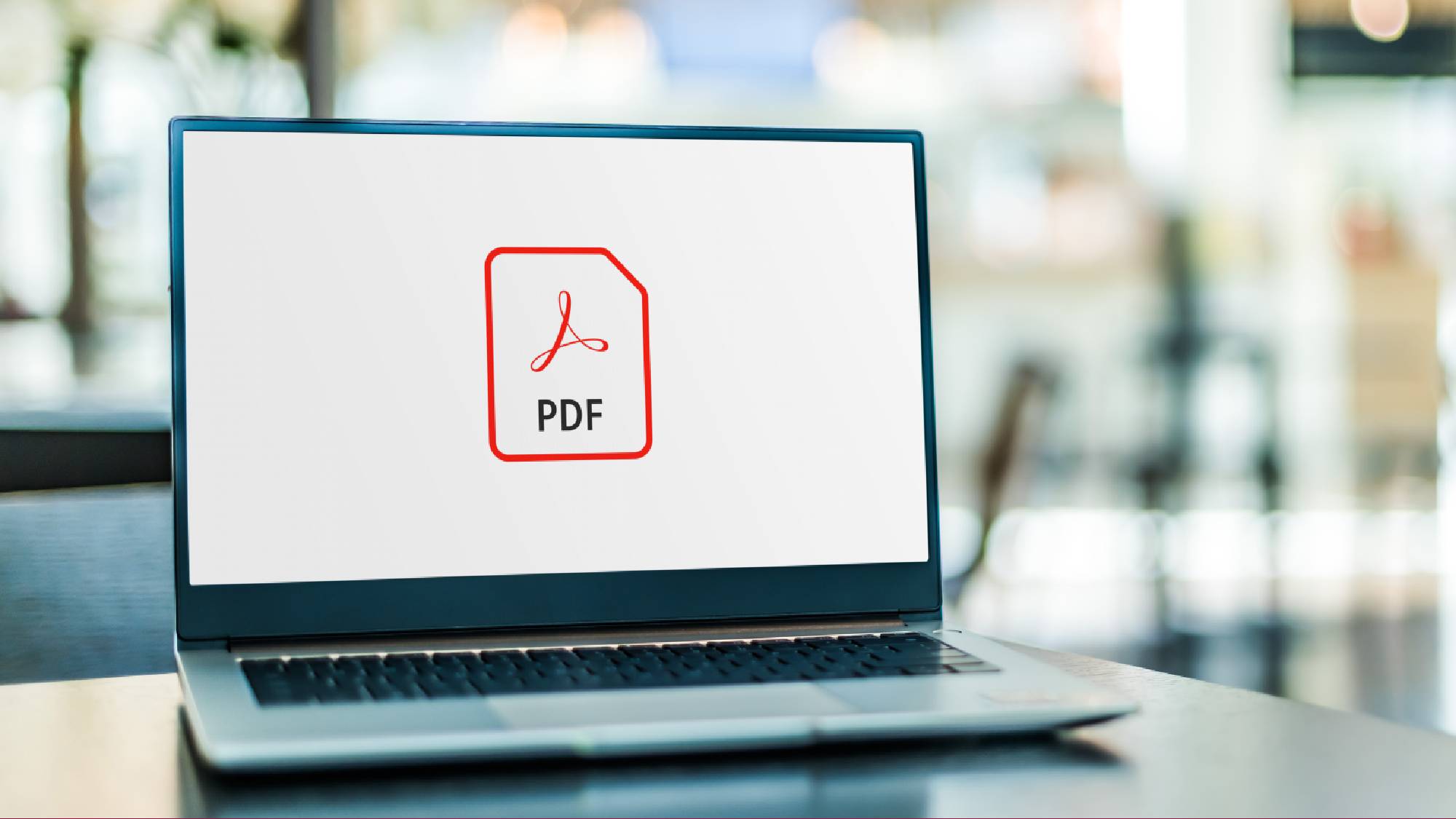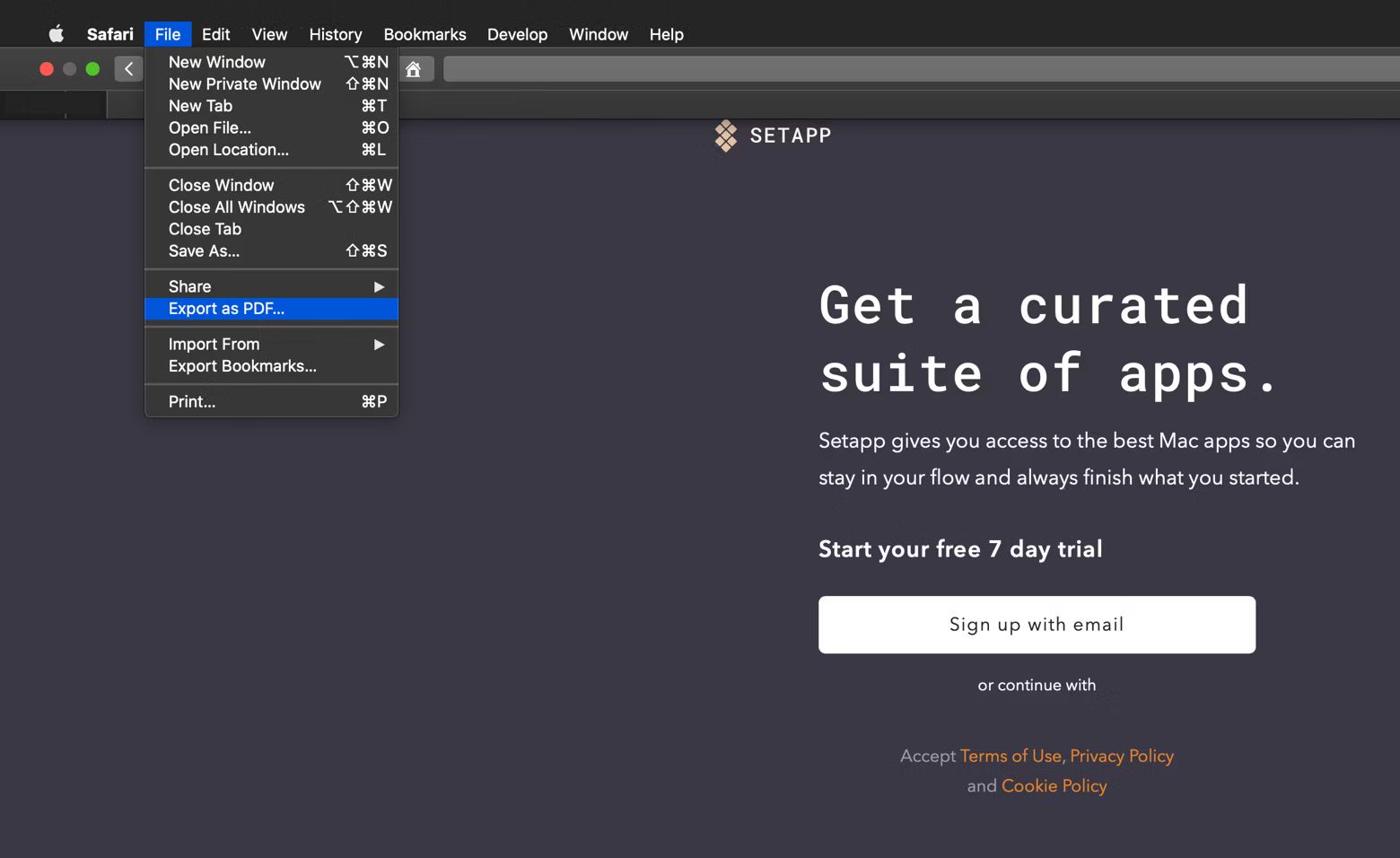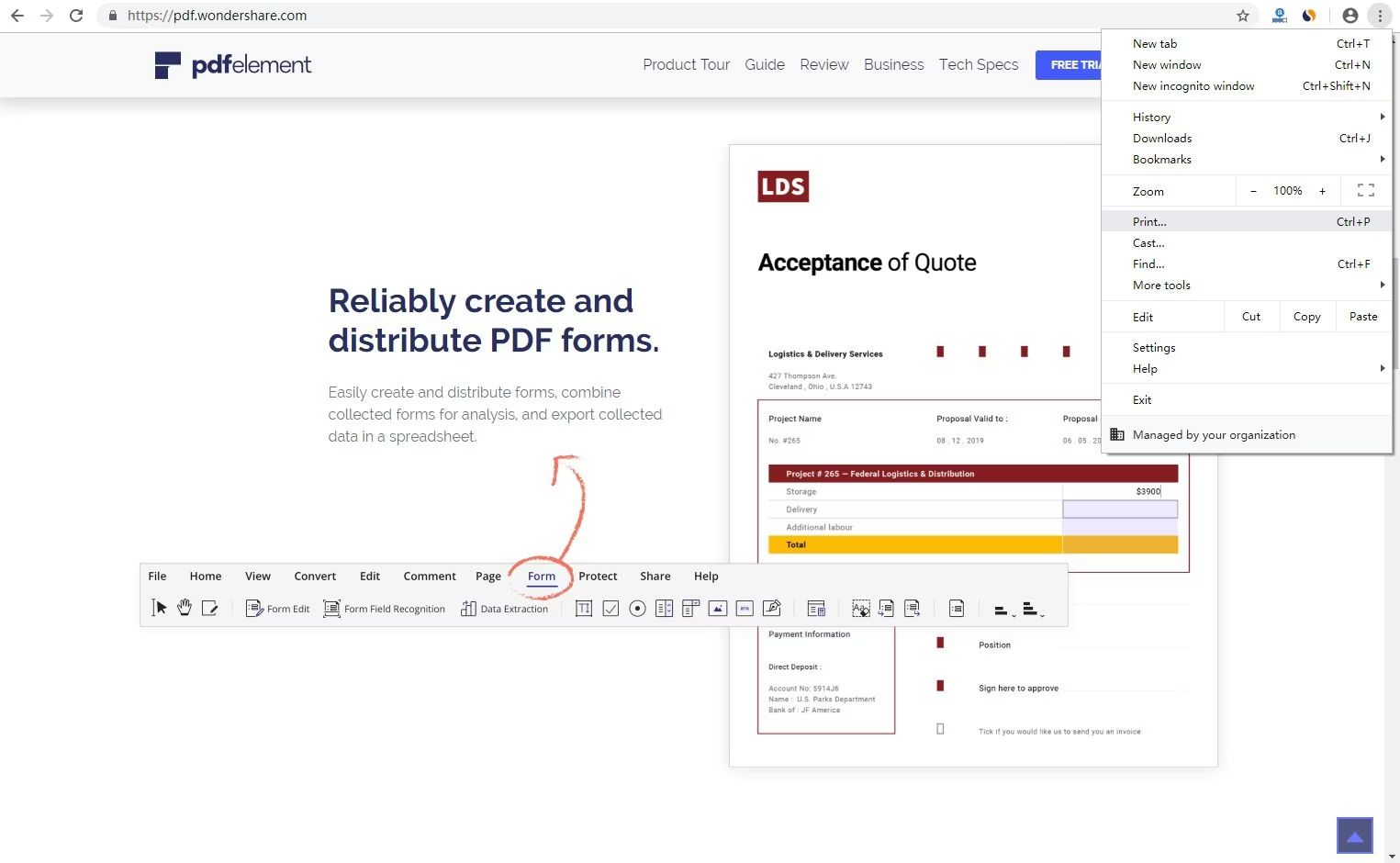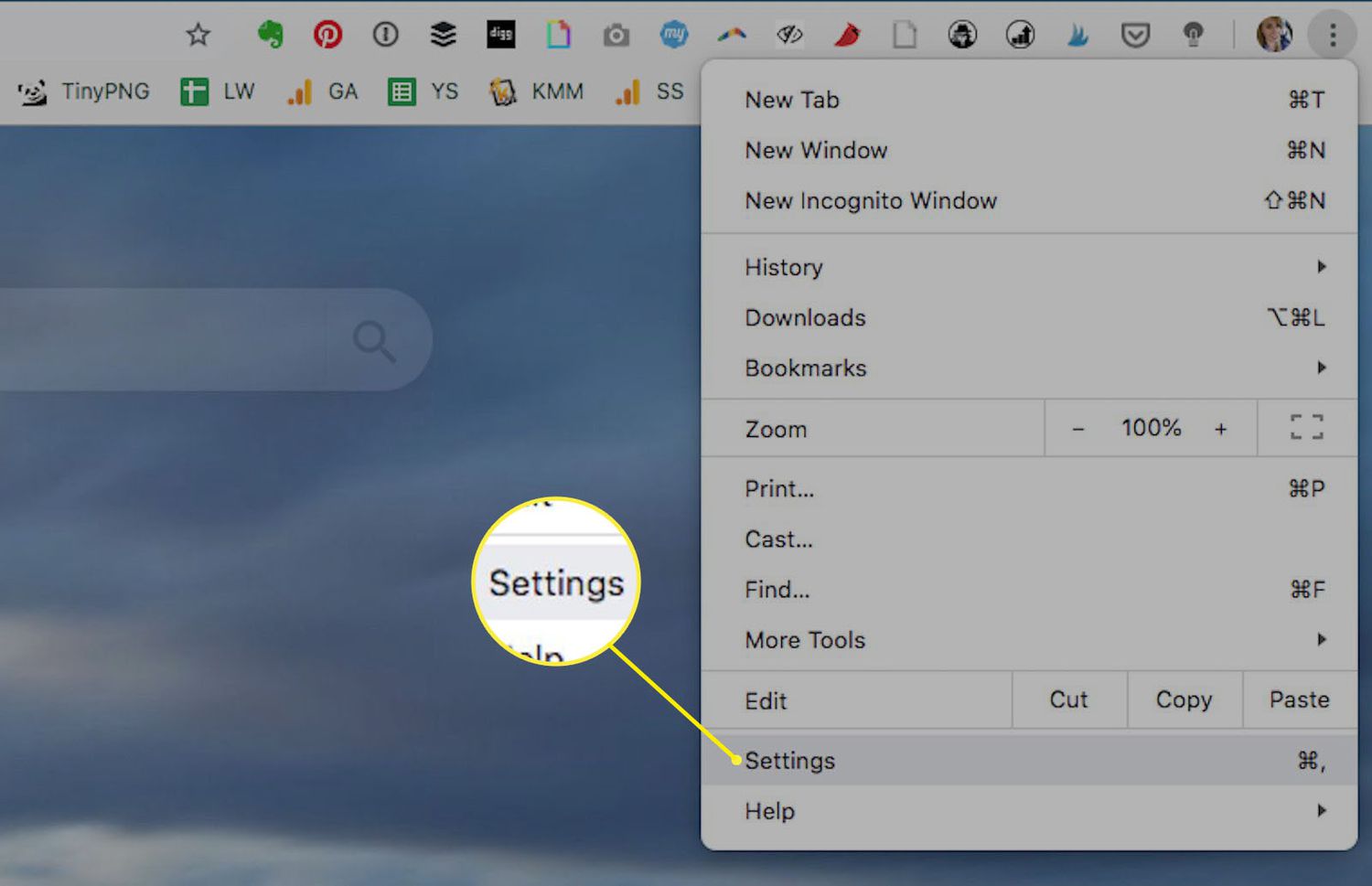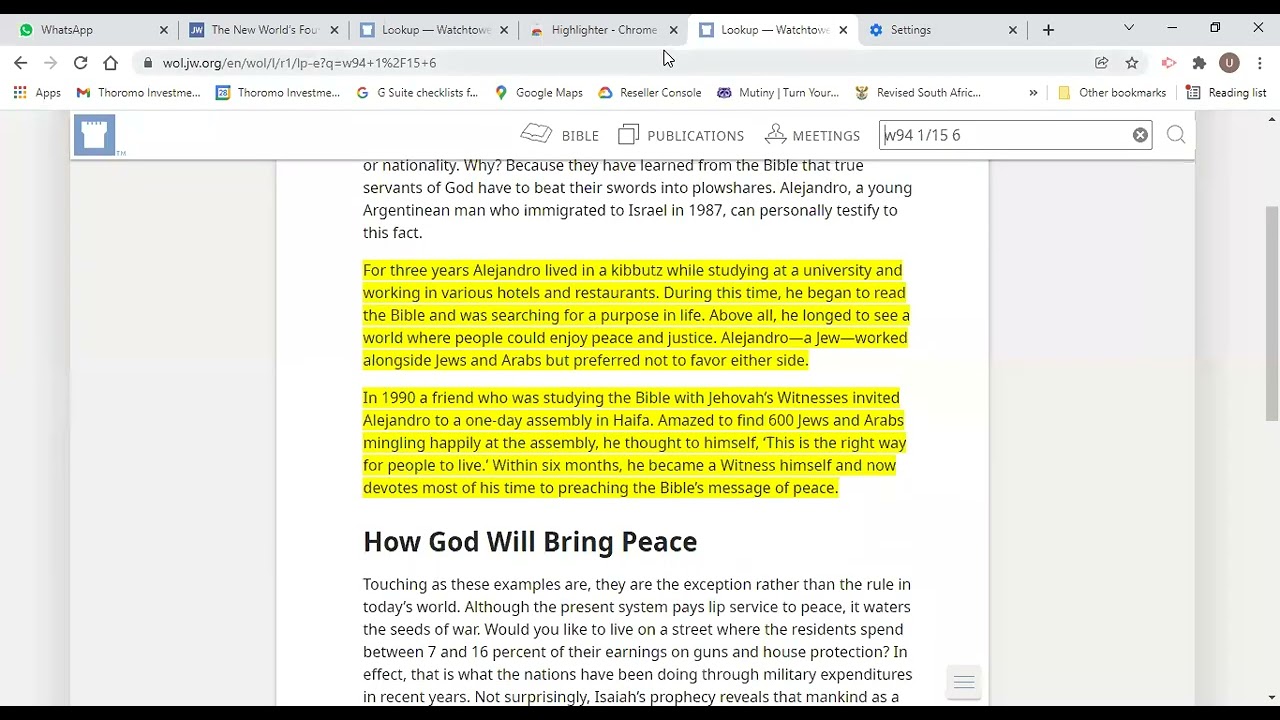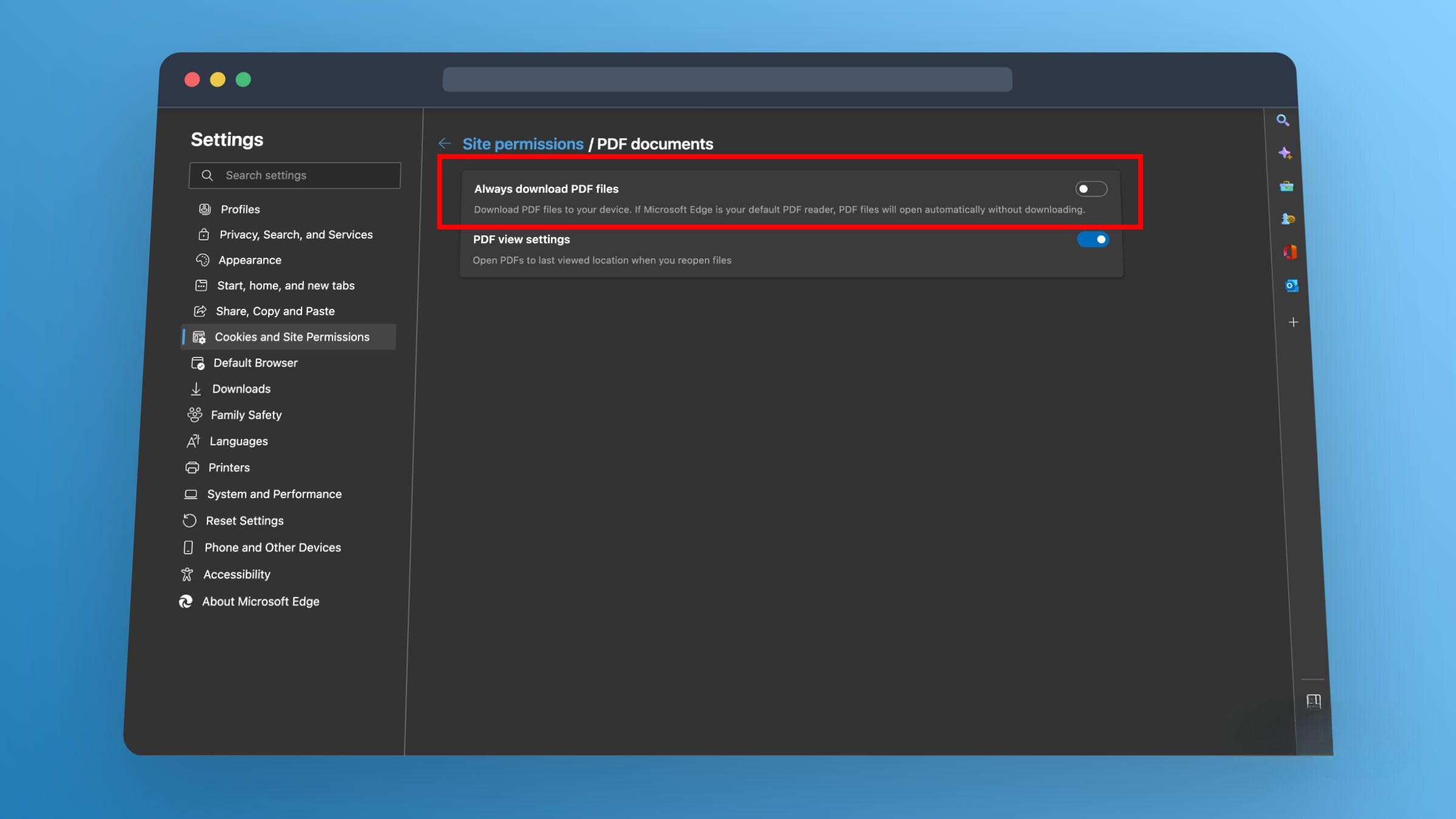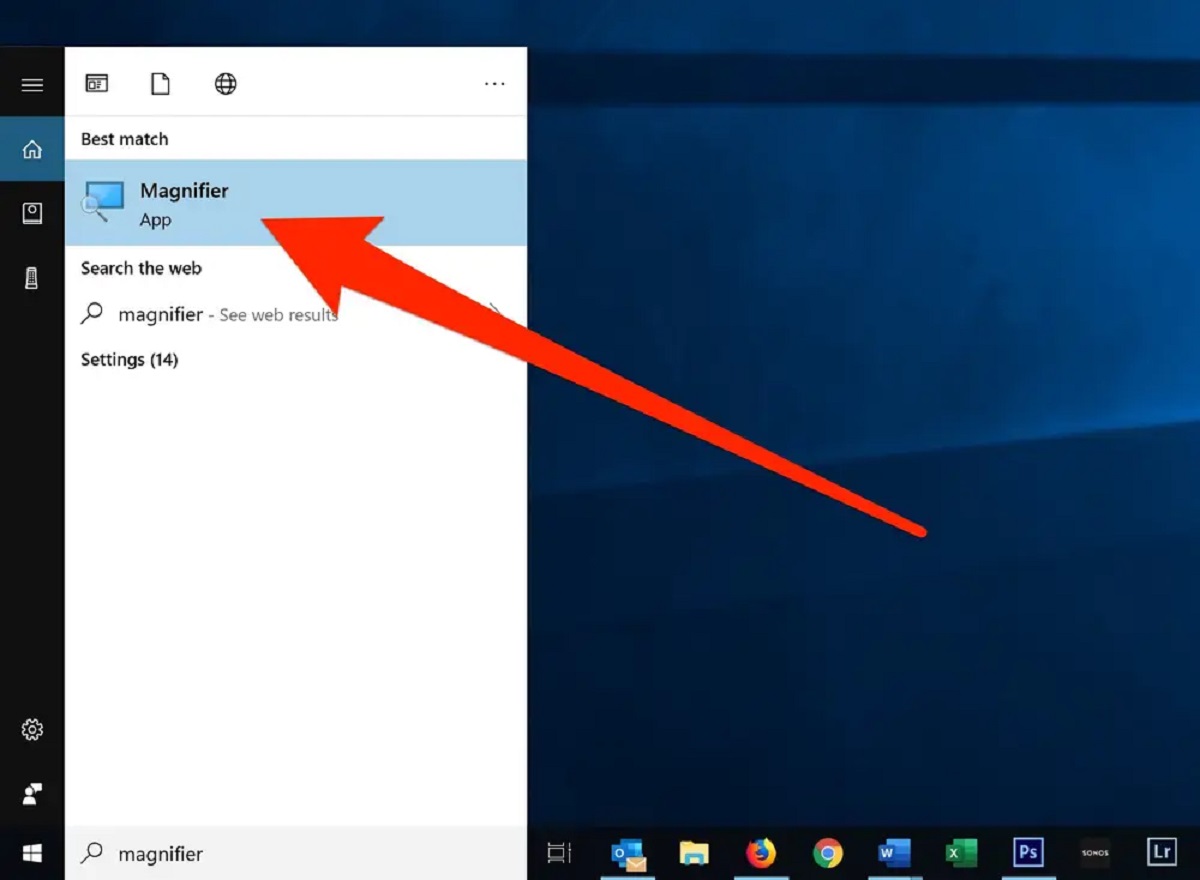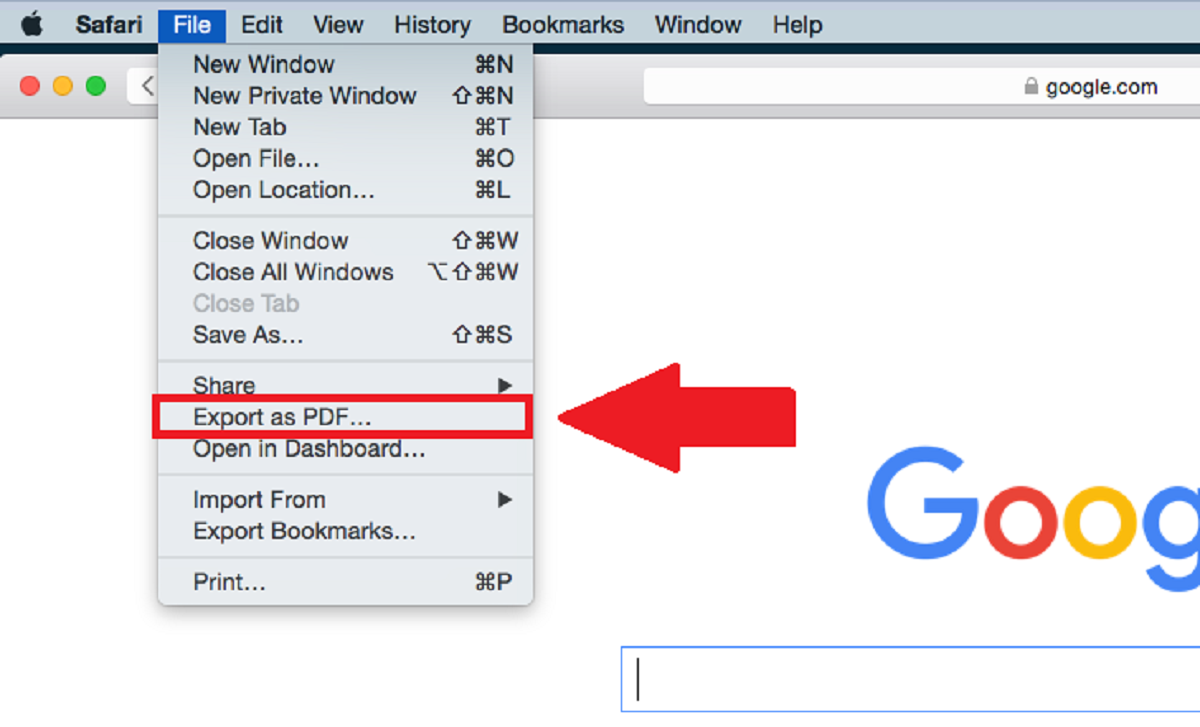Introduction
Saving a webpage as a PDF in Chrome can be a convenient way to preserve online content for future reference or offline reading. Whether it's an insightful article, a captivating blog post, or a visually appealing webpage, converting it to a PDF file allows you to retain the original layout and content, making it easily accessible at any time. This simple yet powerful feature offered by the Chrome browser enables users to create a portable version of a webpage, complete with images, text, and formatting, without the need for third-party tools or plugins.
In this guide, we will walk through the step-by-step process of saving a webpage as a PDF in Chrome, providing you with the knowledge and confidence to seamlessly capture and store online content in a convenient and shareable format. By following these instructions, you can unlock the ability to curate your own digital library, compile research materials, or simply keep a personal archive of web-based resources that resonate with you.
Whether you're a student looking to compile research materials for a project, a professional seeking to store valuable web content for future reference, or simply someone who enjoys collecting digital artifacts, the ability to save webpages as PDFs in Chrome offers a versatile solution. It's a feature that empowers users to take control of their online content consumption, allowing for easy access to information even when an internet connection is not available.
Now, let's embark on this journey together and explore the seamless process of transforming a dynamic webpage into a static, yet highly accessible, PDF document. By the end of this guide, you'll have the knowledge and skills to effortlessly save webpages as PDFs, adding a valuable tool to your digital arsenal. Let's dive in and unlock the potential of this practical and user-friendly feature within the Chrome browser.
Step 1: Open the webpage in Chrome
Before you can save a webpage as a PDF in Chrome, you need to open the webpage you want to convert. Launch the Chrome browser on your desktop, laptop, or mobile device. If Chrome is not already installed, you can download it from the official website and install it on your device.
Once Chrome is open, navigate to the webpage you wish to save as a PDF. You can do this by typing the URL directly into the address bar at the top of the browser window or by conducting a search using a search engine and clicking on the search result that corresponds to the webpage you want to save.
If you have previously visited the webpage and it is part of your browsing history, you can access it quickly by clicking on the "History" option in the Chrome menu and selecting the specific webpage from the list of previously visited sites.
Additionally, if you have bookmarked the webpage for easy access, you can simply click on the bookmark within Chrome to open the webpage.
It's important to ensure that the webpage is fully loaded before proceeding to save it as a PDF. This ensures that all the content, including text, images, and formatting, is captured accurately in the PDF file. You can verify that the webpage has fully loaded by checking that all images are displayed, and any interactive elements, such as videos or forms, are functional.
Once the webpage is open and fully loaded in the Chrome browser, you are ready to proceed to the next step in the process of saving it as a PDF. This initial step sets the stage for capturing the content of the webpage in its current state, allowing you to preserve it in the form of a PDF document for future reference or offline access.
With the webpage open in Chrome, you are now prepared to move on to the next step in the process, which involves accessing the browser's menu to initiate the PDF conversion process.
Step 2: Click on the three-dot menu
Once you have the webpage open in Chrome, the next step in the process of saving it as a PDF involves accessing the three-dot menu, also known as the "More" menu, located in the top-right corner of the browser window. This menu icon, represented by three vertically aligned dots, serves as a gateway to a plethora of browser functions and settings, including the option to print and save webpages as PDF files.
To access the three-dot menu, simply direct your attention to the top-right corner of the Chrome browser window. Upon locating the three-dot icon, click on it to reveal a dropdown menu containing a range of options and features designed to enhance your browsing experience.
The three-dot menu is a central hub for accessing various browser functionalities, making it a versatile tool for navigating and customizing your browsing environment. Whether you're looking to manage bookmarks, access browser settings, or initiate actions such as printing and saving webpages, the three-dot menu serves as a convenient entry point to these capabilities.
By clicking on the three-dot menu, you gain access to a world of possibilities within the Chrome browser, empowering you to take control of your browsing experience with ease and efficiency. This intuitive design element reflects Chrome's commitment to user-friendly navigation and accessibility, ensuring that essential features, such as saving webpages as PDFs, are just a few clicks away.
In the next step, we will explore how to leverage the options within the three-dot menu to initiate the process of converting the webpage into a PDF document, setting the stage for a seamless transition from online content to a portable, offline-ready format. With the three-dot menu serving as the gateway to this transformative capability, you are poised to unlock the full potential of Chrome's built-in tools for capturing and preserving web-based content.
Step 3: Select "Print" from the dropdown menu
After accessing the three-dot menu in Chrome, the next pivotal step in the process of saving a webpage as a PDF involves selecting the "Print" option from the dropdown menu. This action serves as the catalyst for initiating the PDF conversion process, leveraging Chrome's powerful printing capabilities to generate a digital replica of the webpage in the form of a PDF file.
Upon clicking on the three-dot menu, a dropdown menu will appear, presenting a range of options designed to enhance your browsing experience. Among these options, you will find the "Print" feature, which is strategically positioned to provide seamless access to Chrome's printing functionality.
By selecting "Print" from the dropdown menu, you are signaling to Chrome that you intend to transform the current webpage into a printable format, setting the stage for the subsequent customization and conversion steps. This intuitive approach leverages the familiar concept of printing while harnessing the digital medium to produce a PDF representation of the webpage's content.
The "Print" option within the dropdown menu serves as a gateway to Chrome's robust printing capabilities, offering a versatile platform for generating high-fidelity PDF documents from web-based content. This strategic integration of printing functionality into the browser's menu system reflects Chrome's commitment to user-friendly accessibility, ensuring that essential features, such as saving webpages as PDFs, are seamlessly woven into the browsing experience.
By selecting "Print," you are embarking on a transformative journey that transcends traditional printing, harnessing the digital realm to capture the essence of the webpage in a portable and shareable format. This strategic maneuver positions you to harness the full potential of Chrome's printing infrastructure, enabling you to craft a PDF representation of the webpage that faithfully preserves its layout, images, and textual content.
With the "Print" option selected, you are now poised to delve into the intricacies of customizing the PDF layout and options, tailoring the digital replica to suit your specific preferences and requirements. This pivotal customization phase sets the stage for refining the PDF document to align with your desired presentation and accessibility standards, ensuring that the resulting file encapsulates the essence of the original webpage in a convenient and portable format.
In the subsequent steps, we will explore the nuanced process of customizing the layout and options to further refine the PDF document, culminating in the seamless transformation of the webpage into a standalone, offline-ready file. By embracing the "Print" option as the gateway to this transformative journey, you are poised to unlock the full potential of Chrome's built-in tools for capturing and preserving web-based content in the form of PDF documents.
Step 4: Choose "Save as PDF" as the destination
After initiating the printing process by selecting the "Print" option from the dropdown menu in Chrome, you will be presented with a set of printing settings and destination options. At this juncture, it is crucial to direct your attention to the "Destination" section within the printing settings, as this is where you will specify the output format for the webpage. By default, the destination is set to "Save as PDF," positioning you to seamlessly transition the digital content into a portable and universally accessible PDF document.
The "Save as PDF" destination option serves as a pivotal gateway to transforming the webpage into a standalone PDF file, encapsulating its visual and textual elements in a cohesive and shareable format. This strategic choice empowers you to harness the inherent portability and versatility of PDF documents, ensuring that the resulting file can be effortlessly shared, stored, and accessed across various devices and platforms.
By designating "Save as PDF" as the destination, you are signaling to Chrome that you intend to generate a digital replica of the webpage in the form of a PDF document. This deliberate selection leverages Chrome's robust PDF generation capabilities, enabling you to encapsulate the entirety of the webpage's content, including images, text, and formatting, in a self-contained and easily distributable format.
The "Save as PDF" destination option aligns with Chrome's commitment to user-friendly accessibility, offering a seamless pathway to converting web-based content into a universally recognized and highly compatible file format. This strategic integration of PDF generation capabilities into the browser's printing infrastructure reflects Chrome's dedication to empowering users with intuitive and versatile tools for capturing and preserving online content.
By choosing "Save as PDF" as the destination, you are embarking on the final phase of the PDF conversion process, setting the stage for Chrome to compile the webpage's elements into a cohesive and visually faithful representation. This deliberate selection positions you to harness the full potential of Chrome's built-in PDF generation capabilities, ensuring that the resulting file faithfully mirrors the original webpage while offering the inherent benefits of PDF portability and accessibility.
With the "Save as PDF" destination option in place, you are now prepared to proceed to the subsequent steps, where you will have the opportunity to customize the layout and options to further refine the PDF document. This pivotal phase sets the stage for tailoring the digital replica to align with your specific preferences and requirements, ensuring that the resulting PDF file encapsulates the essence of the original webpage in a convenient and universally compatible format.
Step 5: Customize the layout and options
Upon designating "Save as PDF" as the destination, Chrome presents you with a range of customization options to tailor the layout and settings of the PDF document. This pivotal phase empowers you to refine the visual presentation and accessibility attributes of the PDF, ensuring that the resulting file aligns with your specific preferences and requirements.
One of the key customization elements available within Chrome's PDF generation interface is the ability to adjust the layout of the PDF document. This includes options to modify the page orientation, paper size, and margins, allowing you to optimize the visual presentation of the content within the PDF. Whether you prefer a standard portrait orientation or a landscape layout to accommodate wide-ranging content, Chrome's customization features offer the flexibility to adapt the PDF to suit diverse content types and viewing preferences.
Furthermore, Chrome provides options to include or exclude specific elements from the PDF, such as images, headers, footers, and background graphics. This granular control over the inclusion of visual and textual elements enables you to curate the PDF's content with precision, tailoring it to emphasize the core information while maintaining a visually appealing and clutter-free presentation.
In addition to layout customization, Chrome offers settings to adjust the scale of the content within the PDF, allowing you to control the size at which the webpage's elements are rendered in the resulting document. This feature is particularly valuable when aiming to optimize the legibility and visual coherence of the PDF across various devices and screen sizes, ensuring a consistent and user-friendly viewing experience.
Moreover, Chrome's PDF customization interface includes options to modify the compression and quality settings, enabling you to strike a balance between file size and visual fidelity. This nuanced control over the compression and quality parameters empowers you to optimize the PDF for efficient storage and sharing while preserving the integrity of the content's visual elements.
By leveraging these customization options within Chrome's PDF generation interface, you can refine the layout, visual presentation, and accessibility attributes of the PDF document, ensuring that it aligns with your specific preferences and requirements. This phase of the process serves as a pivotal opportunity to tailor the digital replica to suit diverse content types, viewing preferences, and distribution needs, culminating in a PDF file that faithfully encapsulates the essence of the original webpage while offering a refined and user-centric presentation.
Step 6: Click "Save" to save the webpage as a PDF
After customizing the layout and options to align with your specific preferences and requirements, the final step in the process of saving a webpage as a PDF in Chrome involves clicking the "Save" button to initiate the PDF generation and storage. This decisive action serves as the culmination of the customization phase, signaling to Chrome that you are ready to transform the curated digital replica of the webpage into a standalone PDF document.
By clicking "Save," you are setting in motion the intricate process of compiling the webpage's visual and textual elements into a cohesive and visually faithful representation within a PDF file. This deliberate action leverages Chrome's robust PDF generation capabilities, ensuring that the resulting document encapsulates the essence of the original webpage while reflecting the refined layout and customization choices you have made.
Upon clicking "Save," Chrome swiftly processes the customized settings and layout preferences, seamlessly weaving them into the fabric of the PDF document. This transformative process harmonizes the diverse elements of the webpage, including text, images, and formatting, into a portable and universally accessible format, ready for storage, sharing, and offline access.
The act of clicking "Save" represents the final bridge between the dynamic online content and its static, yet highly versatile, PDF representation. This pivotal moment encapsulates the user's intent to preserve the webpage's essence in a durable and shareable format, unlocking the potential for seamless access and distribution across various devices and platforms.
As the PDF generation process unfolds, Chrome diligently compiles the visual and textual elements, adhering to the customized layout and options, to craft a visually faithful representation of the webpage. This meticulous attention to detail ensures that the resulting PDF document faithfully mirrors the original content, reflecting the user's refined preferences and layout choices.
By clicking "Save," you are affirming the culmination of the PDF generation process, marking the transition of the webpage from a dynamic online entity to a static, yet highly accessible, offline-ready document. This deliberate action empowers you to curate your own digital library, compile research materials, or simply preserve valuable web-based content for future reference, all within the universally recognized and versatile framework of a PDF document.
In essence, clicking "Save" represents the final act of transformation, encapsulating the webpage's essence in a durable and user-centric format, ready to accompany you on your digital journey, ensuring that the valuable content remains within reach, regardless of online connectivity.







